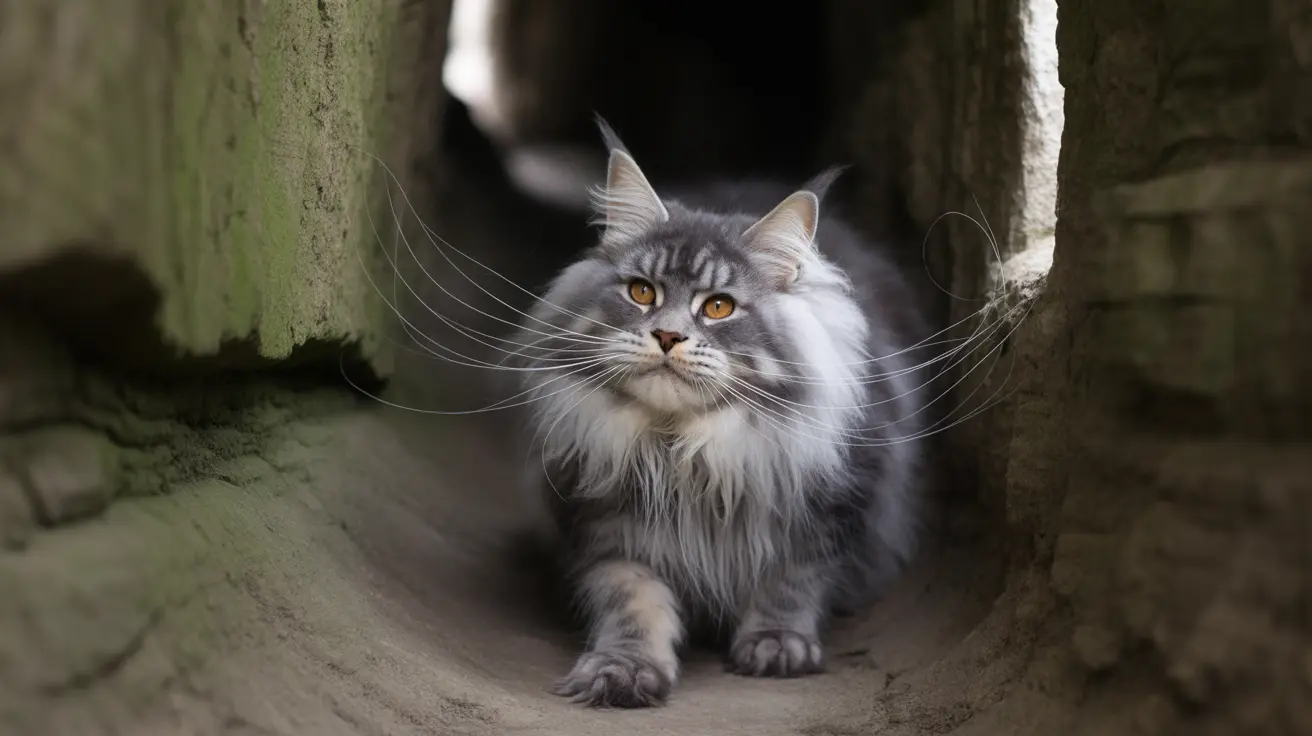The Amazing Anatomy of Cat Whiskers
Cat whiskers, scientifically known as vibrissae, are specialized sensory organs that differ significantly from regular fur. These thick, stiff hairs are deeply rooted in your cat's face, with each whisker connected to highly sensitive nerves that send detailed information to the brain.
Most cats have approximately 24 whiskers arranged in four neat rows on each side of their face. These whiskers are typically proportional to the cat's body width, serving as a natural measuring tool to help them navigate tight spaces.
How Long Whiskers Help Cats Navigate Their World
Long whiskers serve as sophisticated environmental sensors, helping cats:
- Measure spaces and openings before attempting to pass through
- Detect air currents and movement in their surroundings
- Navigate effectively in low-light conditions
- Judge distances while hunting and jumping
- Maintain balance during complex movements
Breeds Known for Exceptional Whisker Length
While all cats have whiskers, certain breeds are known for particularly impressive facial features. The Maine Coon, for example, often sports whiskers up to 6 inches long, perfectly proportioned to their larger body size. Other breeds known for notable whisker length include:
- Norwegian Forest Cats
- Ragdolls
- Siberian Cats
- Persian Cats
The Connection Between Whiskers and Cat Communication
A cat's whiskers are excellent indicators of their emotional state. Forward-facing, relaxed whiskers typically signal contentment, while pulled-back whiskers might indicate fear or aggression. By observing whisker position along with other body language cues, you can better understand your cat's mood and needs.
Proper Care for Your Cat's Long Whiskers
While whiskers are naturally self-maintaining, there are several important care considerations:
- Never trim or cut your cat's whiskers
- Provide wide, shallow food and water bowls to prevent whisker fatigue
- Monitor whisker condition as part of regular health checks
- Contact your veterinarian if you notice unusual whisker loss or breakage
Frequently Asked Questions
Why do some cats have longer whiskers than others, and how does whisker length relate to their body size?
Cats typically have whiskers proportional to their body size. Larger breeds naturally develop longer whiskers to help them navigate spaces relative to their body width. Genetics also play a role in determining whisker length.
Can trimming or cutting a cat's long whiskers harm their sensory abilities or behavior?
Yes, trimming whiskers can seriously disorient cats and impair their ability to navigate safely. Whiskers are crucial sensory organs, and cutting them can lead to confusion, anxiety, and potential injury.
How do cats use their long whiskers to navigate tight spaces and sense their environment?
Cats use their whiskers as natural measuring tools. The whiskers' length typically matches their body width, helping them determine if they can fit through openings. They also detect air movements and vibrations, assisting in spatial awareness.
What does the position or movement of a cat's long whiskers indicate about their mood or emotions?
Whisker position is a key indicator of feline emotion. Forward-facing, relaxed whiskers suggest contentment, while pulled-back whiskers may indicate stress or fear. Twitching whiskers often signal excitement or curiosity.
Are there particular cat breeds known for having especially long whiskers, and what are the practical benefits?
Maine Coons are particularly famous for their long whiskers, which can reach up to 6 inches in length. These enhanced whiskers help larger breeds navigate their environment more effectively and maintain balance despite their substantial size.
Conclusion
Long whiskers are remarkable features that showcase the incredible adaptations of our feline friends. Understanding their purpose and proper care helps us better appreciate these essential sensory tools and ensure our cats maintain their natural navigational abilities. Remember to always respect and protect your cat's whiskers, as they're vital for their well-being and daily functioning.






